







877-CKP-INS1 (877-257-4671) ckpin surance.com Le t CKP H elp You Pro t ec t Your P RF & LRP so you : • Protect your land and livelihood against potential losses due to lack of rainfall • Make the most informed decision for your business • Never purchase unnecessary coverage and pay more than you need Red uce ri s k a nd pro t ec t yo u r o p er a tion f rom the u n pr e dic ta bl e marke t s wit h Lives t ock R isk P rot ect ion (LRP)! LRP can be used as a useful tool to securing lending for your operation! It provides year-round coverage on a per-head basis and a guaranteed price with no bid/ask spread. When buying business insurance, it’s okay to have a generalist agent. When buying PRF insurance, it’s SMART to have a SPECIALIST. • Protects yo ur cash flow • N o claim forms for PRF • Quick & easy cla im payments • No adjusters required Protect Your PRF and LRP CONTACT Jack Field 509-929-1711 jfield@ckpinsurance.com (Pasture, Rangeland, Forage & Livestock Risk Protection)

BOARD OF DIRECTORS
PRESIDENT Jerry Wroten (Wilder) 208-831-7339
PRESIDENT-ELECT
Spencer Black (Almo) 208-647-8130
VICE PRESIDENT
Val Carter (Pingree) 208-390-4811
PAST PRESIDENT
Kim Burton Brackett (Kimberly) 208-308-1952
TREASURER
Cody Hendrix (Rigby) 208-360-9693
FEEDER COUNCIL CHAIR
Shawna Gill (Grandview) 208-850-9076
PUREBRED COUNCIL CHAIR
Arnold Callison (Blackfoot) 208-681-8441
COW-CALF COUNCIL CHAIR
Roscoe Lake (Blackfoot) 208-604-3650
CATTLEWOMEN COUNCIL CHAIR
Tay Brackett (Filer) 208-866-4967
DISTRICT 1 REPRESENTATIVES
Eric Wittman (Lapwai) 208-790-5344
Cece Baldwin (Coeur d’Alene) 208-699-6611
DISTRICT 2 REPRESENTATIVES
Lori Ireland (Mountain Home) 208-866-0112
Royce Schwenkfelder (Cambridge) 208-550-2200
DISTRICT 3 REPRESENTATIVES
Chase Lanting (Twin Falls) 208-539-4371
Jesse Human (Jerome) 208-358-1277
DISTRICT 4 REPRESENTATIVES
Shane Rosenkrance (Mackay) 208-589-3110
Chris Kirby (Salmon) 208-223-2258
DISTRICT 5 REPRESENTATIVES
Matt Thomson (Blackfoot) 208-589-6901
Tim Munns (Snowville) 435-279-4420
ALLIED INDUSTRY REPRESENTATIVE
Kody Dee Williams.....(Fruitland) 509-948-6430
DIRECTORS AT LARGE
Casey Scott...............(Clarkston) 208-431-3024
Adrian Meyer (Grand View) 208-509-1892
CATTLEWOMEN BOARD REPRESENTATIVE
Christie Prescott (Filer) 208-420-3548
ADMINISTRATIVE STAFF
EXECUTIVE VICE PRESIDENT
Cameron Mulrony cameron@idahocattle.org
NATURAL RESOURCES POLICY DIRECTOR
Karen Williams karen@idahocattle.org
ADMINISTRATIVE ASSISTANT
Michelle Johnson michelle@idahocattle.org
DIR. OF MEMBERSHIP & INDUSTRY ENGAGEMENT
Morgan Lutgen morgan@idahocattle.org
Contact Idaho Cattle Association:
Mailing address: P.O. Box 15397, Boise, ID 83715
Location: 2120 Airport Way, Boise, ID 83705
Phone: 208-343-1615
For advertising sales, contact: idahocattlepublications@gmail.com
The Line Rider is the official publication of the Idaho Cattle Association. It is published 10 times each year, in January, February, March, April/May, June, July/August, September, October, November and December.
4 LINE RIDER APRIL/MAY 2024 www.idahocattle.org TABLE OF CONTENTS APRIL/MAY 2024 DEPARTMENTS Message from the President 6 Message from the EVP 8 Message from Natural Resources Policy Director 10 Guest Column: Fighting for Idaho Agriculture 18 Idaho Legislative Update 26 FEATURES Cover Story: Grazing Is Good: An Update from the Public Lands Council 16 Idaho Beef Council: Empowering Beef Innovation 20 U of I: The Replacement Heifer Dilemma 24 IRRC: Measuring Success 29 IRCP: Creating a Legacy 31 CSI: Equipping Future Stewards and Advocates 34 SICA: The Future Looks Bright 37 Rangeland Economics: Closing the Gap 41 Spring Coloring Contest 43 Summer Round-Up Registration 44
Issue
Public Lands
Photo by Jeannie Stafford
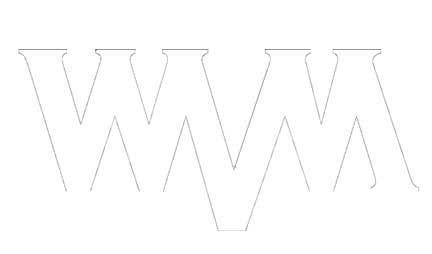

Thursday, May 2
Consignment Deadline: April 17
Harris Ranch Inn & Restaurant Coalinga, CA
Thursday, May 23
Consignment Deadline: May 15
WVM Headquarters Cottonwood, CA
Thursday, June 6
Consignment Deadline: May 29
WVM Headquarters Cottonwood, CA


Name, Not a Number Follow us Contact Us www.wvmcattle.com wvm@wvmcattle.com (530) 347-3793 Market where you’re a Watch all of our sales on wvmcattle.com
What the future holds
A brief history of Idaho’s public lands “
Never let yesterday use up too much of today.”
–W ill Rogers
It’s been quite a while since 1934, 90 years if you want to be a little more exact. In recent centuries we have seen wars, technological leaps (man on the moon, social media) and other signs of the changing times. From a little bit of research provided by the USDA NASS, in 1934 the value of feeder cattle was $19.70 per head, a $46 dollar drop from 1930, at which point, the market would almost double by 1936. 1934 was the year when the Taylor Grazing Act was enacted and set the foundation for the playing field we still operate in today, Public Lands Grazing. Ol’ Will reminds us that we can’t let yesterday use up too much of today.
The Public Lands Grazing of 1934, I would imagine, looks a bit different than what we see today. The cattle breeds have changed, the ownership has gradually moved on to the next generations, not to mention the addition of regulations. In 1969 the National Environmental Policy Act, followed by several more policies, would continue to evolve the outlook and actions of public grazers. Nearly two-thirds of Idaho’s acres are considered to be public lands, which is about 34.5 million acres. These acres incorporate a wide range of multiple uses from from logging to mining, and recreation to grazing. The fundamental basis of this multiple use is important to provide the full benefit of the public lands to the general population. Idaho has long been the vanguard of protecting multiple use when it comes to public lands matters. My family’s operation has been in a lawsuit for a long time with the BLM and one of the main reasons we haven’t lost (other than a bit of stubbornness) has been due to the benefit of work the ICA has done over the years.
But back to Will’s point, enough about the past, let’s look at today. We have all had our personal and
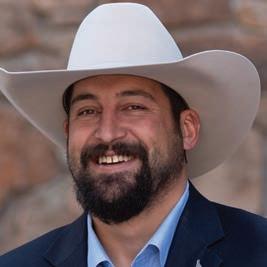 BY JERRY WROTEN ICA President
BY JERRY WROTEN ICA President
public experiences with some form of government entity that manages the lands we operate, recreate, and protect. Currently there is the possibility of an upcoming change within the public lands realm, the Public Lands Rule proposed in April of 2023. I’m no expert on this subject matter, but have been fed a firehose of information over the last year learning about this proposed rule. This proposal received over 216,000 comments in the commentary period from a variety of interested parties. The concerning issue is the addition of conservation leases. The theory of adding this conservation lease could be seen as iimprovement — in fact, we ranchers have worked to conserve the lands for generations. However, this proposed use could provide an avenue to prevent grazing, in which case the ICA, with their most experienced staff (I would say in the nation, personal bias), continues to work to protect our members from this deception.
For western ranching operations, public lands grazing is important due to the very nature of the landscape. Our ranchers work to provide economic outputs to our industry through uncultivable lands. We also provide ecological ways of protecting the landscape through rotational grazing and carbon sequestration. I have seen firsthand, ranchers who risk their lives and well-being to fight wildfires on public lands through their local Rural Fire Protection Associations. The same rancher will meet with their range con every spring to discuss the health of the rangeland. There have been a lot of changes and quite a bit of work done on all sides, in the spirit of rangeland health. The ICA will continue to protect our way of life through our member driven policy. You can easily get lost in the historical events, laws, and regulations we have experienced and possibly miss out on the good things we are doing today. We can learn from yesterday but let’s move to keep improving tomorrow and not let too much of yesterday take up our today.
6 LINE RIDER APRIL/MAY 2024 www.idahocattle.org
MESSAGE FROM THE PRESIDENT


Avoiding the chaos
...and don’t forget to vote!
The month of May has arrived as you read this and with it comes a list of items that you work to achieve each year at this time. No matter your schedule we all have a list of items we do at certain times of the year. We value structure and consistency in our lives when it fits. I wanted to take a moment and touch on the value of consistency: consistent staff, consistent communication, consistent processes, etc. If we look at any aspect of our operations, or businesses we work with, a component of consistency is welcomed. Imagine if we changed the unloading process at the sale barn each week, or the gate you sorted with was in a different location each time you used the pens, or a different exit from the freeway to get downtown. It would be chaos.
ICA staff works to send our message consistently to the decision makers in our state and national offices that represent our industry.
Regardless of the process or practices, some consistency adds value to each of the items. The legislative process is no different. As we work to make policy, there is a process or timeline that is fairly consistent and with it adds value. Occasionally we see a rift in the structure breaking the consistency, and again, creating a bit of chaos. The addition of The Western Martingale to the ICA communication platforms proved to
 BY CAMERON MULRONY ICA Executive Vice President
BY CAMERON MULRONY ICA Executive Vice President
add some consistency to our message and to our communications with our membership who choose to engage in policy. Our rifts in the session often present themselves when non-member producers catch wind of an item late in the process and they have concerns to express. Personally, I have no issue with differing viewpoints — at times there are logical concerns that need to be addressed. But consistent involvement and consistent communication from the Association to the membership, will not address the lack of information that non-joiners receive. We need consistency, just like your cow walking past an open gate to find the hole she climbed out of if it is not a normal gate that they utilize. Consistency is key here as well.
ICA staff works to send our message consistently to the decision makers in our state and national offices that represent our industry. The world is not what it used to be and the individuals in those governmental positions are ever changing due to growth, expansion, contraction, or lateral movement. The number of people that are in the same job for 10-20 years seems to be declining. If you look outside of the agriculture community. This magnifies the need for a consistent process as well as a consistent voice from our membership and leadership as we tackle the issues at hand — some of them for the 3rd or 4th time with a new cast of characters each time. Take the Sage Grouse plans, the wolf lawsuits, and others; it’s the same story, different day, from time to time.
If we look to today however, with the many changes across the landscape we are also seeing some lack of consistency in the processes. Although not as much at the state level as the national level, the playbook is changing. The
8 LINE RIDER APRIL/MAY 2024 www.idahocattle.org
MESSAGE FROM THE EVP
equation of x + y has since changed to x - y + z, or maybe even w. This leads to confusion and frustration. This is not a new concept, but I write this to be a reminder that communication among our industry, membership, leadership, staff, legislators, agency personnel, and citizens of Idaho continues to be critical as we continue to navigate the 21st century.
I encourage you, as a member, to stay consistent: in your support of the ICA, in your engagement with our resolutions and policies, with your engagement at the state legislature, and most importantly to me as I work to be the consistent voice of the industry in your communication with the staff of the ICA. I take pride in the operations and work that we do on behalf of our membership and I have often stated, “I don’t know, what I don’t know.” and what I mean is that there are issues, concerns, and many successes that we may not hear about if you are not the one to shoot us a note or drop us a call. Please do not hesitate and encourage your neighbors to engage with the Association and the processes that guide our state or nation at whatever level you can.
As we wrap up this 2024 legislative session, please remember to vote in the primary election and choose candidates that will work for agriculture. Even if that means change, find the vote record for your district and check to see if it aligns with your personal values. If it does not, look to see if there is an option that does. One thing that has been consistent in Idaho for quite some time is the importance of the primary election in determining the future of our state. Don’t miss the opportunity May 21st, or prior if you vote absentee, to find a consistent voice to work on behalf of Idaho’s Cattle Industry. We will continue to do our work with those individuals as we collectively engage to Preserve, Promote, and Protect our livelihoods and the operations that produce the greatest protein in the world.



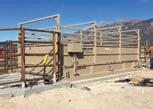

www.idahocattle.org IDAHO CATTLE ASSOCIATION 9
Now is the time to optimize nutrition and performance. Your local CowBos Dealer delivers cost-effective, labor-saving and high-quality solutions with professional service to make the most of your investment. PROTECT PROFITS 1.855.4CowBos | www.CowBos.com Specializing in Truck and Livestock Scales Established in 1959, Scales NW offers a wide range of equipment, from precision lab balances to high capacity rail scales, as well as certified scale service and installation. Contact Steve Orr for more information today! Email: steveorr@scalesnw.com Phone: (503) 510-3540 www.scalesnw.com • (800) 451-0187 Scales NW is proud to serve: California Idaho Montana Nevada Oregon Utah Washington AD_POWELL_LivestockTruckScale_4.5x5.indd 1 12/20/2017 4:34:34 PM
Grouse and grazing
Where do we stand today?
For the past several years, the sage grouse issue has been a political football, thrown from one end of the field to the other, from president to president. For the past couple years, we’ve been waiting in the locker room in a prolonged halftime anticipating the next steps of the Biden administration. Well, it’s time to come out and fight for our team, which, as it happens, is on the right side. Management of the sage grouse species and its habitat has been in flux for well over two decades. It is no secret that anti-land use activists have been attempting to use the sage grouse species as a means to control and limit public land management since it was first petitioned to be listed as an endangered species in the early 2000s. Although sage grouse are not currently listed as endangered, but rather “warranted, but precluded” by the U.S. Fish and Wildlife Service (FWS), the federal land management agencies consider it to be a sensitive species and have consequently worked to change their land management plans to incorporate sage grouse habitat protections, under the constant threat of litigation from the “environmental” organizations. About half of sage grouse habitat occurs on Bureau of Land Management (BLM) land, so their management of the species plays a big role in FWS’s decision-making process into whether to maintain the current listing status of the species. Our industry is therefore held hostage between taking steps necessary to prevent an Endangered Species Act (ESA) listing and ensuring that the land management agencies do not institute management actions beyond what is necessary. The BLM and Forest Service’s efforts have been particularly subject to shifting in the political winds. In 2015 the first sage grouse federal land management plans were issued under the Obama adminis-
 BY KAREN WILLIAMS ICA Natural Resources Policy Director
BY KAREN WILLIAMS ICA Natural Resources Policy Director
tration. The plans largely overlooked the Idaho state plan which had been crafted through careful and deliberate collaboration with a wide variety of stakeholders, including ICA, and government officials. The 2015 plan also called for the implementation of restrictive sage brush focal areas and sought to regulate grazing in a way that was not only unnecessary for the species, but also unfounded in science. For that reason, when a new president was elected in 2016, we worked diligently with the Trump administration to rollback those plans. That goal was accomplished, for the most part, in 2019, when the plans were updated, and they closely mirrored the Idaho state plan and our agreed-upon recommendations. As expected, litigation ensued, and the plans were never implemented as the various lawsuits languish in court. In response to the litigation, the Biden administration promised to review and redo the BLM’s sage grouse management plan. In March, the BLM released the latest iteration of the plan for public review with a comment deadline of June 13.
Over the past few weeks, we have been involved in several meetings to review and discuss the plan’s potential impact on livestock grazing. This review has led us to determine that the most recent version of the plan falls somewhere between the 2015 and 2019 proposals. The plan presents a range of alternatives, as required by the National Environmental Policy Act (NEPA). These alternatives range from very restrictive to the status quo. Alternative 3 is an absolute non-starter as it eliminates grazing in all priority habitat management areas. The agency’s preferred alternative, Alternative 5, offers a much more workable solution that, in theory, adheres to existing land health standards and does not require changes to grazing permits unless grazing is a
10 LINE RIDER APRIL/MAY 2024 www.idahocattle.org
MESSAGE FROM NATURAL RESOURCES POLICY DIRECTOR
causal factor in not meeting standards. It will be key for our industry to weigh in on the plan and enumerate the many benefits of continued livestock grazing in sage grouse habi tat and the non-necessity of making changes that reduce the availability of BLM land for grazing.
Essentially, we just want to ensure that the BLM does not overstep their bounds in going beyond the mark to appease sage grouse advocates and conservation organizations. The recently finalized 10-year study by the University of Idaho en titled, “Grouse and Grazing Project: Effects of Cattle Grazing on Sage-Grouse Populations”, provides significant research proving that the presence of cattle is not detrimental to the nesting success of sage grouse and in fact, can offer some an cillary benefits. As we build the case for continued livestock grazing on BLM land, we will utilize this research, along with other existing scientific evidence that proves the conservation value of livestock grazing, particularly in regard to the prima ry threats to sage grouse of wildfire and invasive species.


The implementation of this plan will greatly affect how graz ing, and other uses, are managed on public land. We need you to suit up and take the field to let the BLM know that grazing is good for sage grouse. The following page provides all the information you need to review the plan and submit comments. Please help us protect continued livestock grazing on BLM land.


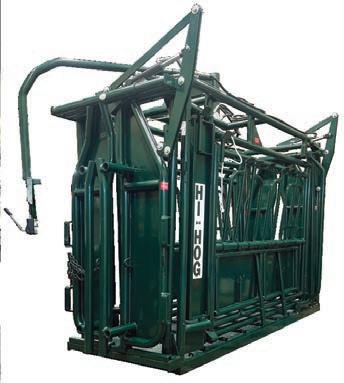

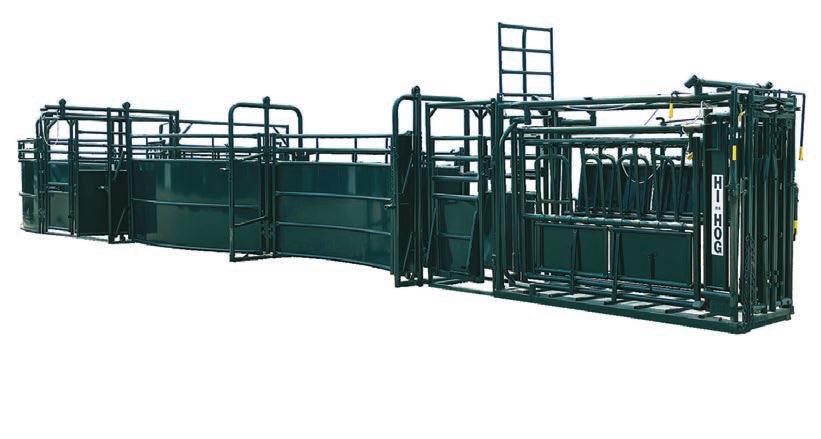
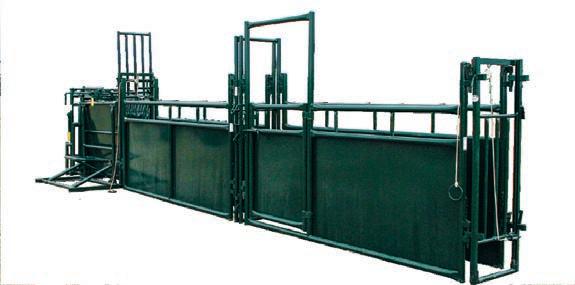
www.idahocattle.org IDAHO CATTLE ASSOCIATION 11
RIO HONDO Livestock Supply Squeeze Chutes - Double and S-Alleys - Calf Alleys and Tables Contact Richard Brook @ 208.308.8912 19645 Hwy 30, Buhl, Idaho www.hi-hog.com WE PROUDLY SUPPORT Keeping Idaho farms safe and productive since 1968. Our employee owners are dedicated to ensuring you get the best tires and auto service.
The Bureau of Land Management (BLM) released for public review the latest version of their proposed sage grouse management plan. The implementation of this plan will greatly affect how grazing, and other uses, are managed on public land. ICA needs you to take part in this public process and let the BLM know that grazing is good for sage grouse.
To review the plan, type “BLM sage grouse plan” in your internet search browser and click on the BLM’s plan site. From there, you can follow the links to read the documents and comment.
The comment period closes on June 13. We recommend you use the following points to focus your comments. Feel free to copy these points or build from them to formulate your own comments. For more information or to review ICA’s full comments, please visit the Western Martingale, https://westernmartingale.com/greater-sage-grouse/ or email to karen@idahocattle.org.
Key Commenting Points:
• Livestock grazing is good for sage grouse and should not be reduced. It promotes healthy vegetation growth, reduces fine fuels, and helps control invasive species.
• A recent study completed by the University of Idaho has proven that grazing provides many benefits for the species. It is important to incentivize good grazing practices rather than punish or limit grazing.
• Alternative 3 is bad for sage grouse, bad for the economy, bad for cooperative conservation efforts, and contrary to the BLM ’s multiple -use mandate.
• Through its existing framework and rangeland health standards, BLM already has the adequate mechanisms in place to manage grazing in sage grouse habitat. If existing grazing management is meeting standards then sage grouse habitat is being adequately managed and conserved. There should be no additional restrictions on grazing permits.
• Unless livestock grazing has been determined as the single causal factor in habitat or population decline, livestock reduction in any form should not be considered by BLM in any management action.
• Management decisions should be made at the local level based on site -specific impacts and ecological site potential. The plan should defer to information at the local and state level and allow decisions to be made at that level that are not top-down prescriptive and responsive to what is happening on the ground.
• Rangeland improvement projects are an important tool for grazing permittees and the BLM to manage grazing at optimal levels. This plan should not result in the reduction or elimination of range improvements and should not discourage their development.
• Idaho has been a leader in collaborative sage grouse conservation efforts and Idaho ranchers have proven themselves willing and able to come to the table to reach effective solutions for management concerns. The BLM ’s plan for Idaho should mirror the collaboratively -developed state plan. Online
On the BLM’s plan website, click on the “Participate Now” button, and enter your comments through the website. E Email
blm.gov
BLM_HQ_GRSG_Planning@
M Mail BLM Utah State Office ATTN: HQ GRSG RMPA 440 West 200 South #500 Salt Lake City, UT 84101
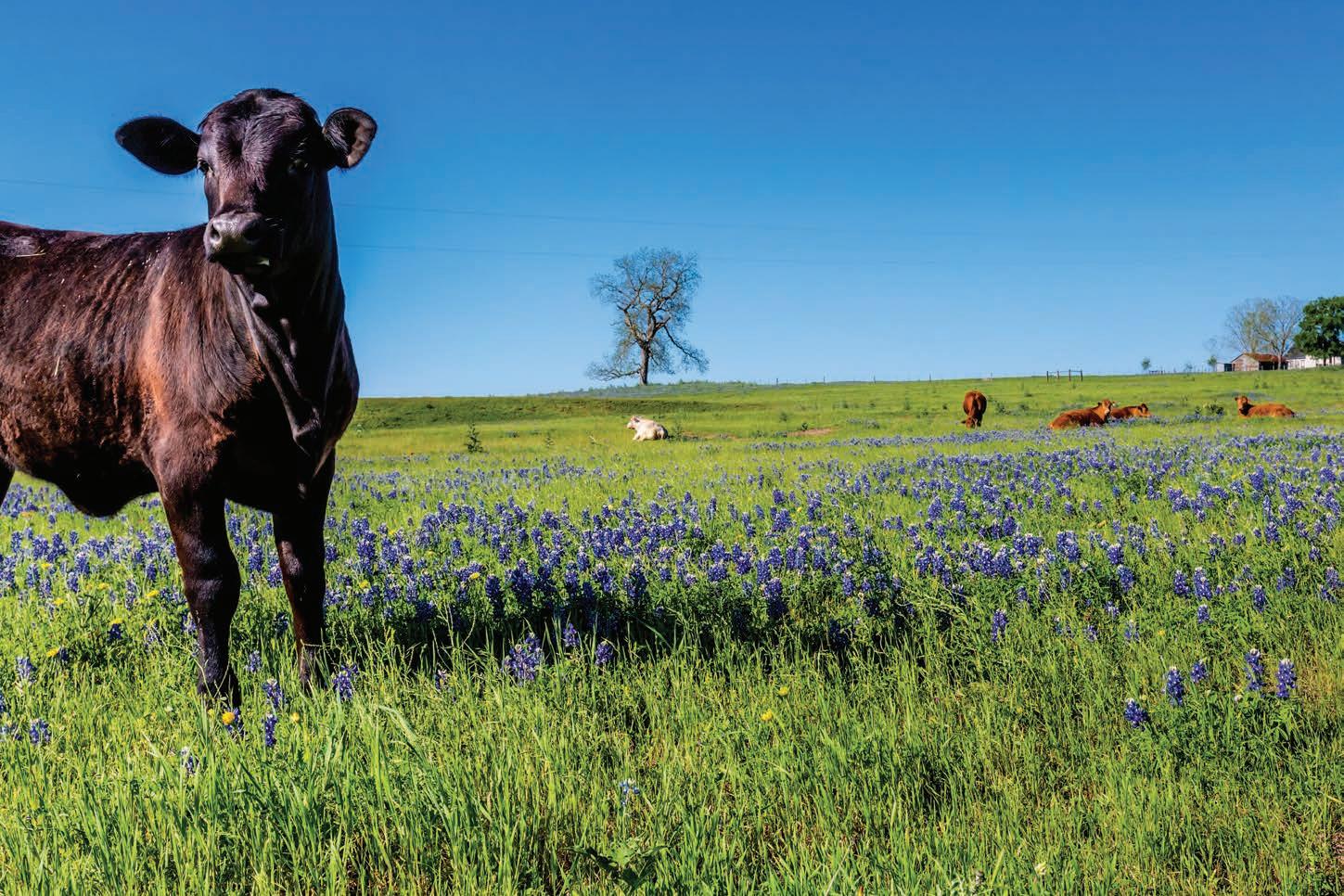


www.idahocattle.org IDAHO CATTLE ASSOCIATION 13 vwcenergy.com valleyag.com shop.valleywidecoop.com YOUR TRUE AG PARTNER
Fighting for Idaho agriculture
Reducing burdens on our farm & ranch families
For years, Washington bureaucrats have enacted policies and regulations that impede the ability of farmers and ranchers to feed our nation. Unfortunately, this past year has been no exception. As a fourth-generation Idahoan raised on a dairy farm, I understand firsthand how overreaching government interference can disrupt daily operations. Farmers and ranchers serve as the backbone of our nation’s agricultural landscape. Over the last year, my efforts have been focused on protecting these operations and putting an end to the harmful anti-energy and agriculture policies the Biden Administration is working to implement.
This rule, if implemented, would have allowed foreign adversaries, anti-agriculture, and pro-environmental activist groups to purchase federal land on the NYSE.
One of the most significant victories in Congress this year was the successful halting of a proposed rule from the Securities and Exchange Commission (SEC) that would allow Natural Asset Companies (NAC) to be listed on the New York Stock Exchange (NYSE). This rule, if implemented, would have allowed foreign adversaries, anti-agriculture, and pro-environmental activist groups to purchase federal land on the NYSE. This would have been detrimental to Idahoans, as these entities could interfere with land management policies. To ensure this ill-conceived rule never saw the light of day, I co-sponsored legislation to prohibit the SEC
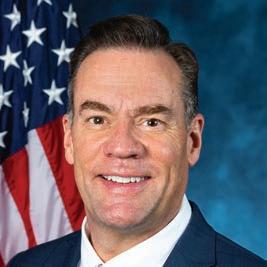 BY RUSS FULCHER U.S. Congressman
BY RUSS FULCHER U.S. Congressman
from implementing the rule and joined my colleagues in sending letters to the SEC challenging their authority to advance this rule. Additionally, I co-signed a letter to the NYSE’s parent company, IEG, questioning their rationale behind proposing this rule.
Lastly, Congress must acknowledge the significance of preserving family-owned farming and ranching operations for generational prosperity. This year, I proudly co-sponsored H.R. 7035, the Death Tax Repeal Act, which seeks to permanently eliminate the Death Tax. For far too long, family-owned enterprises, farmers, and ranchers who face the loss of a loved one are burdened with additional hardship when confronted with hefty tax liabilities from the IRS.
The threat of sudden taxation often jeopardizes the continuity of family businesses, creating financial uncertainty. Family-owned enterprises account for more than 99% of our nation’s two million farms and ranches, as well as over 95% of small businesses. This legislation aims to empower these multigenerational businesses to sustain their livelihoods without having to pay a devastating tax on the death of a family member.
Additionally, the stepped-up basis provision within the tax code has long served to shield individuals from capital gains taxes on inherited assets like land, equipment, or buildings, allowing recipients to adjust their cost basis to reflect fair market value. A study conducted by the U.S. Department of Agriculture’s Economic Research Service determined that 66% of all mid-sized farms would see an increased tax liability if a stepped-up basis was eliminated. Given the capital-intensive nature of agriculture, such a move would pose significant challenges.
I will always stand strong for the cattlemen and women who fuel our nation, and I am honored to represent the First Congressional District in Congress. If you ever have a question or concern, please do not hesitate to reach out to my office.
14 LINE RIDER APRIL/MAY 2024 www.idahocattle.org
GUEST COLUMN


GROWING HERDS & RELATIONSHIPS SINCE 1904. Ag is our business.
COVER STORY
BY KAITLYNN GLOVER Executive Director, Public Lands Council
GRAZING ISGOOD: ANUPDATEFROMTHE PUBLICLANDSCOUNCIL
TThe snow has barely melted in parts of the West and already, we are looking to the end of the year in Washington, D.C. In any election year, the legislative calendar seems so short as many members are as focused on campaigning at home as they are on passing legislation. Several of these legislative priorities are high on PLC’s list of must-pass vehicles, so in the waning days of the 118th Congress, we are focused on fighting some of the most important legislative battles of the year.
 Photo by Noppadol Paothong
Photo by Noppadol Paothong
16 LINE RIDER APRIL/MAY 2024 www.idahocattle.org
We’ve been talking about the current Farm Bill for more than 5 years, and it seems likely that we’ll be talking a while longer. While national Farm Bill discussions tend to center around crop production and food security programs, the Farm Bill is an important place for forest, range, and wildfire policy. PLC is here to ensure the bill pushes federal agencies to use all tools at their disposal to create healthy landscapes – especially grazing.
Legislative language recognizing the value of grazing is crucial to protecting grazing across the West. The administration wants to conserve landscapes and restore habitats? Grazing does it. Congress wants to support rural communities that thrive because of people taking advantage of hiking and biking? Grazing keeps those landscapes open, safe, and healthy. PLC has used “Grazing is Good” for several years as the motto we carry forward in nearly all natural resource discussions across the country. Grazing IS good, but federal lands grazing is also hard – and it’s made harder by burdensome and wildly inconsistent federal regulations.
For the last several years, the thread of a regulatory onslaught has been looming on the horizon. Unfortunately, now it’s here. This spring alone, we’ve already seen the administration finalize problematic Endangered Species Act rules that roll back any progress we made in the last 5 years on common-sense habitat boundaries. The BLM’s approach in their “conservation and landscape health” rule looks more like a “landscape designation and creative accounting” rule – while also proposing a near-complete overhaul of management plans across the West.

The final rule, made public just before Earth Day, was accompanied by broad commitments by the agency to use this transformational rule and its tools to reshape and rebalance land management and land health. Therein lies the problem. For the last year, BLM has argued that the tools they sought to formalize as part of the rule were things the agency was already doing, but wanted in writing for consistency. They argued that the proposed rule simply clarified who could do restoration and mitigation on public lands, provided a streamlined process for ACECs, and formalized how they were applying land health standards to all multiple uses. Nothing to see here, they said.
At the same time, the agency touted how transformational this rule would be, arguing their existing tools like collaborative partnerships and Good Neighbor agreements were insufficient and conservation leasing was needed to fill the gap. The agency argued this new tool was authorized by the Federal Land Management and
 Photo by Ken Miracle
Photo by Ken Miracle
Photo by Ken Miracle
Photo by Ken Miracle

Policy Act, but the law is quite clear about which uses are “principal or major uses” of BLM lands. “Conservation” is not among those uses.
Ultimately, BLM chose to finalize a rule that compromises their ability to carry out their multiple-use mission as well as any ability to conserve landscapes through thoughtful management. By going outside Congressional intent and creating a new leasing system for restoration and mitigation, BLM has created a new staffing burden, upended the multiple-use balance in hundreds of land use plans, and made enemies out of important allies in Congress. By elevating the role of the agency in the process to designate ACECs, BLM has disenfranchised the public process and weaponized ACECs as tools to remove select stakeholder groups.
Public lands ranchers are committed to conservation. We rely on healthy landscapes, and want to leave these lands and waters better than we found them. We want to work with the BLM to do it, but this final rule compromis-

es our ability to do that. This is especially true in light of BLM’s parallel process to expand their 2012 Western Solar Plan to 6 additional states, including Idaho. The radical expansion of the solar project area will impact grazing across the 14 Western states. Among the broad feedback we provided, PLC prioritized a total prohibition on any solar facilities that would impact allotments or reduce AUMs.
As if all of that wasn’t enough, BLM is taking another run at sage grouse management plans. Is it feeling like 2019 again, yet? The proposal leans heavily on designation of Areas of Critical Environmental Concern that would take tools out of the toolbox and threaten grazing West-wide. PLC is again leading the industry charge on technical comments, and with the help of the Idaho delegation and Idaho PLC, ensuring Congress continues to prevent an ill-advised ESA listing for the grouse.
While you all were digging out of snow, we were sorting through stacks and stacks of paper from all of the rules and regulations from this spring to bring you a digestible list of priorities for the rest of the year. As we work through threats like activists’ attempts to re-list gray wolves, threats to groundwater and water storage across the west, proposed monument designations, and more, our partners at Idaho PLC are putting your needs at the forefront of the national conversation. We were excited to welcome Marty Gill as the new member of the PLC Board of Directors from Idaho, and I encourage you to contact him for the latest and greatest news from PLC. I hope you will join Marty and the rest of the PLC membership September 17-19 in Grand Junction, Colorado for PLC’s 56th Annual Meeting.
18 LINE RIDER APRIL/MAY 2024 www.idahocattle.org
Photo by Jeannie Stafford/USFWS

Empowering Beef Innovation
Idaho Beef Council showcases University of Idaho Graduate Fellowship achievers.
Every year your beef checkoff dollars help increase domestic and global demand for Idaho beef through consumer promotions, education, and research. In June 2021, the Idaho Beef Council pledged a $250,000 gift to establish the Graduate Fellowship Endowment at the University of Idaho. Since the establishment of the endowment, four graduate students have participated in beef-specific research projects.
This endowment continues to empower graduate students pursuing advanced studies in meat science by providing them with the financial support and resources necessary to excel in their research projects. Checkoff dollars have a long history of funding research as a key strategy for advancing the beef industry because targeted research helps to deliver science-based outcomes which document, communicate and improve quality in beef and beef products.
MEET THE GRADUATE RESEARCHERS
Since the endowment’s inception, the year of funding was awarded to an entire graduate team as they were all working closely on checkoff research.

DR. PHIL BASS LEADING A MEAT CUTTING DEMONSTRATION.
Brooklyn Epperson from Lynden, California, obtained a Bachelor of Science in Animal Science from the University of Idaho, and worked on her master’s project which was focused on Idaho Finger Steaks. She received IBC Endowment funds over multiple years, and her primary objective was to evaluate lower-valued cuts from the beef chuck, sir-
Checkoff dollars have a long history of funding research as a key strategy for advancing the beef industry.
loin, and round for finger steak production and compare them with traditional loin cuts commonly used as finger steak raw product. The research hypothesized that meat from certain muscles and anatomical areas of the chuck and round may be acceptable alternatives to the current traditional strip steak often used for finger steak production. These results indicate that a batter application on underutilized cuts from the round and chuck can increase the acceptance. Additionally, the research showed that consumer acceptance of battered meat products is vital for increased purchases to secure the products stability in the market. Increasing consumer acceptance and the consistency of finger steaks could provide opportunities for greater marketing, product development, and value discovery opportunities. In the summer of 2023, Brooklyn took a job with Cargill Meat Solutions in Wichita, Kansas where she is part of a value-added product team.
Sierra Jepsen from Amanda, Ohio completed her agribusiness degree from Ohio State University, and worked on checkoff-funded research focusing on carcass size and merchandising alternatives for beef top sirloin at the University of Idaho. Her primary objective was to identify muscles and anatomical portions of a commercially available beef sub primal from varying grades, carcass weights and ribeye areas to add value to the carcass and provide a more desirable, and predictable, eating experience to the consumer. This type of research is important for realizing the maximum marketability of beef cuts, leading to profitability for retailers. Prior to her work at U of I, she taught as the meat judging coach at the University of Wyoming for four years. Sierra now owns and operates her own meat processing consulting business out of Livingston, Montana.
20 LINE RIDER APRIL/MAY 2024 www.idahocattle.org
IDAHO BEEF COUNCIL
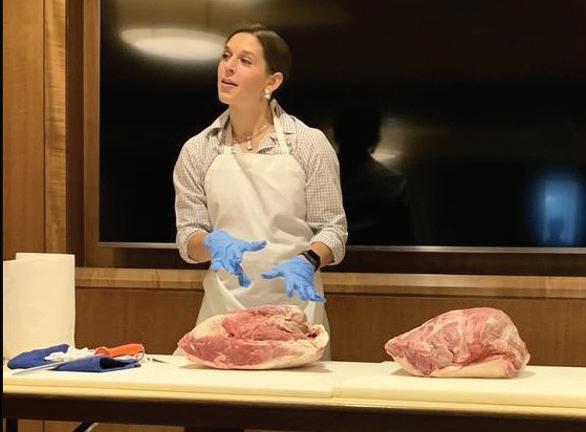
Jessie Van Buren from Lewiston, Idaho has been a longtime member of the meat science team. She has a bachelor’s and master’s degree in animal science from the University of Idaho and is currently working on her Ph.D. in meat science. Jessie is currently researching antioxidant research on beef cuts common in the export market, which would extend the shelf-life of frozen beef that is commonly exported, such as chuck rolls and bone-in short ribs, could increase international demand and producer profits. Her specific objective was to determine the effect of the topical application of a combination of acerola cherry powder and rosemary extract on previously frozen beef bone-in short rib and chuck roll steak to improve shelf-life including color, lipid oxidation, and fluid loss.
Mikayla Heimbuch is from Southern California. During her undergrad time at the University of Idaho, Mikayla was integral to the meat science team and has helped with several checkoff-funded research projects.

Mikayla completed her master’s degree in meat science in 2023 and was heavily involved in the checkoff-funded projects including the National Beef Quality Audit.
For the 2024-25 academic year, Corbin Fornes. will join the team, and will begin his master’s of science degree at the University of Idaho. As soon as he arrives in May, his project will be selected. It will most likely focus on current NCBA initiatives concerning freezing and thawing practices of beef cuts for commercial beef processing operations. Corbin is a native
of central Florida and just completed his animal science degree at Mississippi State University with some well-known meat scientists.
SUSTAINABLE IMPACT
The Idaho Beef Council’s approach to the Graduate Fellowship Endowment is to create a long-term, sustainable partnership with the University of Idaho. By utilizing a portion of earned interest while preserving the principal, the endowment ensures perpetual funding for graduate research initiatives. Phil Bass, Ph.D. said, “This endowment has touched the lives of students with a varied geographic background, including Idaho natives. The research team is extremely productive, and we are grateful for the support to continue the mission of serving the beef industry.”
This sustainable funding model not only provides ongoing support for students but also advances the mission of expanding global and domestic consumer demand for beef. Moreover, with matching contributions from the University of Idaho’s Animal and Veterinary Sciences Department, the endowment’s reach and effectiveness are amplified, maximizing its potential to drive change.
ADVANCING INDUSTRY STANDARDS
As a leader in U.S. beef production, Idaho can play a pivotal role in shaping industry standards and practices. Through the Graduate Fellowship Endowment, the Idaho Beef Council invests Checkoff dollars to advancing beef quality, safety, and sustainability. By supporting research initiatives aligned with the Beef Promotion and Research Act and Order, the endowment contributes to maintaining and expanding domestic and foreign markets while identifying new avenues for growth and innovation.
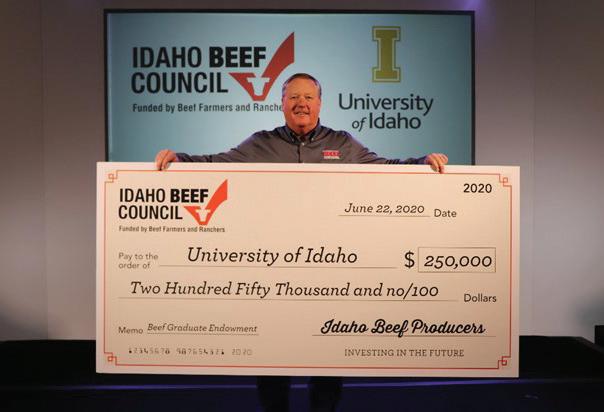
www.idahocattle.org IDAHO CATTLE ASSOCIATION 21
SIERRA JEPSEN CONDUCTING A MEAT CUTTING DEMONSTRATION.
CORBIN FORNES, NEWEST ENDOWMENT RECIPIENT.
JEFF JOHNSON, FORMER IDAHO BEEF COUNCIL CHAIRMAN PRESENTS CHECK TO UNIVERSITY OF IDAHO COLLEGE OF AGRICULTURE AND LIFE SCIENCES.
IDAHO ’ S INVESTMENT IN THE INDUSTRY ' S FUTURE

The Idaho Beef Council ( IBC ) created the IBC Graduate Fellowship Endowment in the U of I College of Agricultural and Life Sciences to benefit students whose studies are aimed at strengthening the beef industry ’ s position in the marketplace and maintaining and expanding domestic and foreign markets .
Research helps maintain and grow consumer trust in beef and beef production by providing resources that counteract misperceptions and showcase the industry ’ s commitment to quality and safety .
Research has also aided producers in their quest to improve beef quality and better respond to evolving consumer needs .


To learn more about how the investment of state beef checkoff dollars is supporting innovation of beef quality, marketability, and new product development, please visit www.idbeef.org/cattlemens-corner/beef-industry-research.
 This endowment has touched the lives of students with a varied geographic background, including Idaho natives. The research team is extremely productive and grateful for the help to continue the mission of serving the beef industry
Phil Bass, Ph D Associate Professor, Meat Scientist
This endowment has touched the lives of students with a varied geographic background, including Idaho natives. The research team is extremely productive and grateful for the help to continue the mission of serving the beef industry
Phil Bass, Ph D Associate Professor, Meat Scientist











www.idahocattle.org IDAHO CATTLE ASSOCIATION 23 SPRING WILL COME... WILL YOU BE READY? 1.800.632.3005 www.simplot.com CHAD DEWITT C: 208.891.0324 JIM RYSKA C:208.890.4312 KENZIE STEVENS C:208.731.2117 We have everything you need for branding! VACCINES • DEWORMERS • BRANDING IRONS • IMPLANTS REACH OUT TO A LOCAL REP BELOW: MARK NELSON C:208.985.4942
The Replacement Heifer Dilemma


Maximizing returns and determining your herd females value.
BY JOHN B. HALL, PH.D.
Professor & Extension Beef Specialist
Hunt Family Beef Education and Research Professor
Calf prices were tremendous this fall and are mind-bogglingly high this spring. So, who wouldn’t want more cows (as long as you have the feed)? Is it time to keep or buy replacement heifers? Country-wide there is little indication that heifer retention is increasing. There are very limited reports that producers are beginning to increase replacement heifer numbers regionally. However, is this the right time?
Feeder calf prices are predicted to hit record highs in 2024 and 2025 and probably into 2026. However, after 2026 feeder calf prices are expected to decline; although, they will probably remain at a new level of $200-$220 ± for 6-7 cwt. calves (Univ. Missouri – FAPRI). CattleFax reports bred females are averaging $2,700 to $3,100 per head in 2024 with predictions of them going higher. Locally, replacement sized heifers (600-800 lbs.) are currently bringing $1550 to $1975 per head. So here is the dilemma: How can herd size be maintained or increased at this point in the cattle cycle? At expected calf prices, will a bred heifer purchased for over $2,500 pay for herself? Can you afford to keep and develop replacement heifers out of your own herd when a feeder heifer is worth almost $2000? Do I keep extra heifers to sell this fall? Producers really need to think about their options. Recently agricultural economists from Nebraska addressed the questions of bred heifer value and ability to pay for herself. They produced some hard numbers, but those numbers were based on assumptions that fit Nebraska. Rather than fight about what is the right value for heifers in a particular operation, let’s
focus on the factors that affect the value of a bred heifer (regardless of purchased or home raised) and her ability to pay for herself and more. For details on the Nebraska information see links: https://beef.unl.edu/beefwatch/2024/what-are-replacement-heifers-worth-2024
https://www.youtube.com/watch?v=bFXpexWCZeA
FACTORS AFFECTING HEIFER VALUE AND RETURNS
Return from replacement female = [(number of calves produced x value per calf) + salvage value] – [(annual cow cost x years kept) + development or purchase cost]. Loss from any breeding female that leaves the herd at a young age (less than 6 years) must be compensated by the profit from other cows. Primary factors influencing heifer value are longevity (or replacement rate), productivity, genotype & phenotype, operator goals and financial standing.
Longevity. It usually takes the profit over cow costs from 4 or 5 calves to recoup the cost of a bred heifer. The longer cows stay in the herd the greater likelihood that they will be profitable. Obviously, phenotypic traits such as structure, feet and leg soundness and high-quality udders are important to longevity. Therefore, choosing structurally sound heifers from dams with good udders and longevity is vital.
However, a big factor is calving early in their first calving season. Work from the USDA Meat Animal Research Center indicated that almost twice as many cows that calved during the first 21 days of the calving season as first calf heifers remained in the herd at 6 years of age (5 calves) compared to cows that calved later as heifers (Figure 1). Therefore, developing heifers properly and selecting them for early puberty is critical.
24 LINE RIDER APRIL/MAY 2024 www.idahocattle.org
UNIVERSITY OF IDAHO
Replacement rate is the percentage of the herd that needs to be replaced each year to maintain cow numbers. Lower replacement rates indicate increased cow longevity. Replacement rate is a major factor affecting heifer value. Producers whose herds have lower replacement rates can afford to spend more on heifer development or purchase.
for heifer selection if it can be obtained at a reasonable cost or is supplied with heifers for purchase.
Operator goals and management style. What are the goals for the operation? Will calves be sold at weaning, after backgrounding or retained through the feedlot? Will cows be managed in an extensive or intensive operation? How will the heifer contribute to the overall future of the ranch? While this factor does not affect whether a heifer will pay for herself, it does affect the value of the heifer to the ranch.
Financial standing. Simply this is the debt or money borrowed to support purchase or development of replacement heifers. Borrowing money, especially at today’s rates, drastically reduces the amount ranchers can afford to spend on replacement heifers.
Productivity. In this case, productivity is the difference between cow cost and calf revenue. Cows that calve early in the calving season produce 35 to 50 lbs. of calf at weaning compared to later calving cows. In addition, cows need the proper amount of growth and milk so calves are heavy at weaning, but cows still breed back quickly. Finally, cows need to be efficient in the environment of the ranch.
Productivity is the second most important factor influencing heifer value. Operations with lower annual cow cost as well as better calf performance have greater opportunity to have heifers pay for themselves. The key is profit from calf income over cow costs. Another issue is the cost of developing home-raised heifers compared to buying them. Certainly, most producers feel they can produce heifers for less than $3,000. However, remember that part of the cost of heifer development is the value of the heifer as a feeder heifer. Therefore, cost of development is the feeder heifer price plus feed and labor for development. Keeping heifer development costs in check while getting 90+% of heifer bred is a challenge.
Genetics and phenotype. This area dovetails with longevity and productivity. Therefore, this area affects heifer value due to their impacts on longevity and productivity. Heifers need to be moderate in size and adapted to the ranch environment. They need to be efficient and easy fleshing. Do they match the type of cows already in the herd? Do these heifers need to function at high altitude? Buying heifers from the Southwest or Midwest may not fit our Western environment. Having sufficient records on cows to identify “heifer mommas” for home raised heifers is important. Newer genomic tests may help provide additional information
In summary, operations with good cow longevity (low replacement rates), low cow costs and strong calf value can afford to spend more on replacement heifers. Having to borrow money to obtain/make replacements will drastically reduce the affordability of heifers. There are no easy answers to the replacement heifer dilemma as each individual ranch has different goals, costs and performance. Before investing in replacement females, ranchers need to take a deep breath and revisit critical factors in their operation that will determine how much they can spend on replacements.
Is Proud To Support
www.idahocattle.org IDAHO CATTLE ASSOCIATION 25
THE AUTHORITY IN LIVESTOCK HANDLING EQUIPMENT
The Idaho Cattle Association powderriver .com P: 800.453.5318 F: 801.377.6927
FIGURE 1. EFFECT OF DAY OF CALVING ON LONGEVITY IN HEIFERS.
Politics & pop culture
Reflecting on the startling similarities between one of history’s wildest acquittals and Idaho’s 2024 lawmaking session.
April 10, 2024, signaled the closing of two chapters. The first was that the Second Regular Session of the Sixty-seventh Idaho Legislature came to a screeching halt and legislators found themselves adjourned Sine Die. This was a chapter that needed to close as many legislators were ready to head back and start campaigning for reelection. Unbeknownst to all of us, a second chapter also closed when O.J. Simpson passed away from a battle with cancer. For those that need a brief narration of this guy’s highlight reel, he had an above average football career, but where he really found fame (and not in a very positive light) was for the alleged murder of his ex-wife and her friend. His police pursuit in 1994 was followed by a captivated audience of over 90 million viewers on television that probably gave some of the best advertising for the Ford Bronco that any car had ever seen. Following his capture, O.J.’s criminal trial attorney found fame through the phrase, “if it doesn’t fit, you must acquit” and the jury found him innocent, but later he was found guilty in a civil trial of robbery, among other things. Whether O.J. actually killed Nicole Brown Simpson, we will never know — the true story likely went to the grave. But if the legal system holds any water, then it would seem that he did not. At this point you’re probably wondering why the government affairs specialist for the Idaho Cattle Association (ICA) is giving us a rundown on O.J.’s life. And more importantly how does it have to do with rangeland, depredations, and fences? The 30,000 (albeit maybe
At the time of the O.J. trial we did not know that media through television would revolutionize the following of celebrity crime and begin turning the justice system into show business.
 BY PATXI LARROCEA-PHILLIPS
BY PATXI LARROCEA-PHILLIPS
weak) footed correlation is split into two pieces. At the time of the O.J. trial, we did not know that media through television would revolutionize the following of celebrity crime and begin turning the justice system into show business. Additionally, I’m guessing that Ford’s crystal ball did not show that a white Ford Bronco, with O.J. Simpson sitting in it being pursued by the police would become a front-page story across America. In our small carveout here in Idaho I don’t think we anticipated the amount of legislation was going to cross the finish the line as it did. We hope that a number of bills passed this session will assist in changing what we know today into something different and positively benefit our industry 30 years from now. Additionally, we hope that some of the bills passed this session become front page cover stories for the cattle industry.
The passage of H468 signifies the enactment of the Rangeland Improvement Act. This new law will allow producers to seek assistance from the Idaho State Department of Agriculture for resources and funding to carry out grazing improvement projects across the state. These projects could consist of the development of water sources or additional fencing in strategic locations. In addition, funding could be used for the control of predator and depredating animals; the control, management, or extermination of noxious weeds or invasive species; and any other management tools that further the general welfare of livestock grazing. H468 was sponsored by Representative Jerald Raymond and Senator Van Burtenshaw. This will be a new program that ICA will be monitoring and assisting where needed with the
26 LINE RIDER APRIL/MAY 2024 www.idahocattle.org
IDAHO LEGISLATIVE UPDATE
implementation of this program through the Idaho State Department of Agriculture and state grazing committee. Depredations were a hot topic this past legislative session, and continue to be on the radar with a ruling from a district court that states that wolf trapping is endangering grizzly bears. That aside, the legislation that passed would create a state level livestock depredation fund for producers that experience losses from wolves and grizzly bears. Currently, the Office of Species and Conservation applies for a federal grant through U.S. Fish and Wildlife Services that has historically provided relief to ranchers for wolf depredations and for non-lethal or conflict prevention. However, the funding that is being provided by this federal grant is continually diminishing and provides no relief for grizzly bear depredations or conflict prevention for grizzly bears. The wolf and grizzly bear depredation fund would be administered by the Idaho State Department of Agriculture (ISDA) with consultation from the Office of Species Conservation and Idaho Fish and Game. ISDA will promulgate rules that provide standards for validated or probable claims of depredated animals alongside the types of conflict prevention methods that could be funded. This will be completed with stakeholders at the table. H592 was sponsored by Representative Jerald Raymond and Representative Mark Sauter in the House of Representatives and Senator Van Burtenshaw in the Senate.

for investigations conducted on animals found to be taken by wolves for depredation payments. H612 was sponsored by Representative Judy Boyle and Senator Mark Harris. Double dipping from H612 and H592 will not be tolerated or allowed for producers. As a producer you will be able to apply to one for funding, but not both.
Another piece of legislation that crossed the finish line this session dealing with depredations is H612. This would add depredation payments to the authorizing language of the Wolf Depredation Control Board. The governing agencies, specifically the Idaho State Department of Agriculture (ISDA), will develop and compile data on the death losses prior to 1995 and the reintroduction of wolves. Using these death losses the board will allow ranchers to submit their previous years’ death losses in a chronic depredation area for payment from the board for those losses. Additionally, this method would remove the need

H608 establishes a new chapter in Idaho Code that would create Agricultural Protection Areas (APA). These designations are great for Idaho because they are voluntary and give property owners the utmost protection. The landowner would make an application to create an APA designation over their real property and would receive certain nonmonetary protections. Once an APA is established, the designation would remain in place for 20 years. The benefits of applying for an APA designation would include allowing the landowner to be shielded from applicable local ordinances or regulations that would unreasonably restrict a farm structure or farm practice. The landowner would also have to provide written approval for any zoning classification changes while local governing ordinances and regulations would have to ensure the landowner would be insulated from public nuisance claims. Finally, eminent domain rights would be limited within an APA. Representative Kevin Andrus and Senator Linda Wright Hartgen were the floor sponsors for the legislation.
S1342 gives IDL the ability to extend grazing lease lengths on state owned property to 40 years as a maximum. Currently, the maximum lease length is 20 years. This would allow livestock operators who seek those grazing leases to have more consistency and predictability when applying for leases with the Idaho Department of Lands. There are certain terms and conditions that must be met by the lessee, but by having a longer term, it removes the risk that they may lose the lease in a shorter amount of time. Rate changes are prescribed by statute and will occur each year of the lease. S1342 was sponsored by Senator Mark Harris and Representative Judy Boyle.
www.idahocattle.org IDAHO CATTLE ASSOCIATION 27
THE WOLF AND GRIZZLY BEAR DEPREDATION FUND WOULD BE ADMINISTERED BY THE IDAHO STATE DEPARTMENT OF AGRICULTURE (ISDA) WITH CONSULTATION FROM THE OFFICE OF SPECIES CONSERVATION AND IDAHO FISH AND GAME.
H712aaS is an interesting piece to discuss. As producers we have all come to know and appreciate open range laws in Idaho. Within our policy book, those laws are supported by policy, and it is my responsibility to assist in protecting and preserving that policy. However, we have come to understand that there are bad actors that can ruin it for everyone. Over the past several years we have been looking at outdated language in fence law, as it relates to monetary fine amounts and speaks to many things that were relevant in the past, but not now. This year a group of industry members looked at the estray statute since we could not seem to get things worked out with the fence code. Open range and certain case law interpreting open range creates the presumption in Idaho that we are a “fence-out” state, where, unless a property owner is in a herd district, it is the duty of landowners to fence livestock out and off of their land. Herd districts are a legislative exception to the “fence-out” rule. With the creation and implementation of proper herd districts those districts remove open range immunity and create a ‘fence in’ situation for livestock owners. It’s safe to say that stray animals can be found in both open range and herd districts. Each location has different ramifications and creates a different set of circumstances that operators should be watching. However, H712aaS does implement heightened damages for any pro-
TOP NOTCH







ducers that do not make a reasonable attempt per the notification periods in the legislation to take their animals off the property where those animals may be trespassing or straying. It should be noted that adjacent property owners in certain situations must also maintain a proper and lawful fence before a livestock owner shall be subject to any damages or criminal penalties. Criminal penalties shall only ensue if a livestock owner is shown to be willful and wanton through their actions in not maintaining or removing stray livestock. I hope this summary of some of the pertinent legislation that we reviewed and supported during this past legislative session gives you an update on how your membership dollars are being leveraged in the statehouse with government relations representation. Our hope is that some of the policies that were passed this year will have a lasting impact and create a better situation for the livestock industry 25 years from now. One thing that is guaranteed, is that what we know and understand now will likely be different in 25 years. Lastly, please be diligent in the upcoming primary election and support legislators that have backed agriculture, specifically the cattle industry. If you have questions, please reach out and we can discuss who the ICA is endorsing and supporting. Best of luck with spring turnout and hope to see you at Summer Round Up.
77.38+/-ACRES– -HWY 20 Bellevue- $851,000


892.86 +/- ACRES –Weiser- $1,399,000 *SOLD*
141.19 +/- Acres-Farm with 140.58+- TFCC water. Filer- $1,250,000 *SOLD*
86.16 +/- Acres– 1022 CAFO/Feedlot Buhl- $1,980,000 *PENDING*
716.01 +/- Acres– Farm w/IDWR water and 8 pivots Hazelton- $7,400,000 *NEW PRICE*

28 LINE RIDER APRIL/MAY 2024 www.idahocattle.org
FEED & FENCE SUPPLY QUALITY SERVICERESULTS PREMIUM
CUSTOM FENCE & INSTALL 208 631 4904
LIVESTOCK PRODUCTS
We Specialize in Tax Deferred Exchanges - Accredited Land Consultant
Measuring Success
A review of notable projects, future vision, and a new face at IRRC.
 OBY GRETCHEN HYDE Executive Director, IRRC
OBY GRETCHEN HYDE Executive Director, IRRC
ne of the priorities of the Idaho Rangeland Resources Commission is to educate the public about management and projects that improve the health of our rangelands, enhance wildlife habitat and improve forage for livestock.
The Bruneau Owyhee Sage Grouse Habitat (BOSH) Project is one of those triple win-win-win projects that checks all those boxes while reducing the encroachment of juniper trees in the giant expanse of Owyhee County. We just completed an in-depth story and video about the BOSH project for our Life on the Range (LOTR) series, and it has had more than 550 views on YouTube since it was published just 10 days ago.
This is a partnership project involving the Bureau of Land Management, Pheasants Forever, Idaho Department of Fish and Game, Natural Resources Conservation Service, Working Lands for Wildlife and a total of 10 state and federal agencies, plus private landowners and ranchers.
Now in its sixth year, the BOSH project is unprecedented in scope and scale – 30,000 acres of state, federal and private lands are being treated per year to halt juniper encroachment.
Our story highlighted brand new research about the benefits of juniper-removal on the sage-steppe landscape. For example, when junipers take over the landscape, other native plants suffer, studies show. Pre-treatment, lost production of herbaceous production peaked at 14,030 tons in 2016. Over the last 30 years, 104,742 tons of herbaceous production have been lost to juniper encroachment in the BOSH project area.
However, the land bounces back quickly following treatments – an increase of 5,000 tons of herbaceous production occurs per year. The project is strategic - all
the cutting units are located within ten kilometers of 70 sage grouse leks in the 617,000-acre project area. After treatment, studies have shown that the growth rate of sage grouse populations have grown by 12 percent.
“The BOSH project stands to be the largest single restoration effort we have ever undertaken in the sagebrush biome. Just to put this in context, it is probably 5-6 times
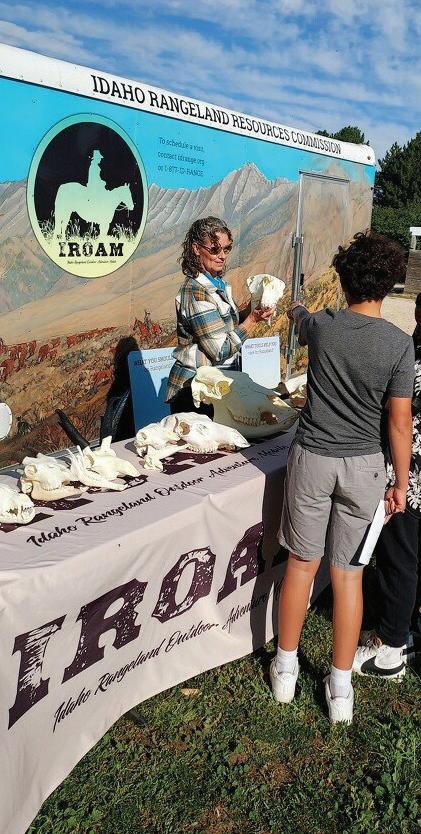
www.idahocattle.org IDAHO CATTLE ASSOCIATION 29
IDAHO RANGELAND RESOURCES COMMISSION

larger than any similar area we’ve undertaken to address this conifer issue,” said Jeremy Maestas, National Sagebrush Ecosystem Specialist for Working Lands for Wildlife. It is valuable to publicize this story because of its significance in both scope and benefits to the range, wildlife, ranchers and everyone else who uses rangelands. And it was nice to receive financial support for our story from the BOSH project team. We appreciate our funding partners including the Idaho Cattle Foundation, NRCS, BLM and US Forest Service approaching us to support the costs of our LOTR stories and IROAM educational programs.
In the last year, LOTR has tackled a wide variety of stories – from a successful research-related prescribed burn in upper Reynolds Creek, a Sage Grouse 101 story that will be super helpful for our K-12 education outreach, the use of drones for rangeland noxious weed control, a feature on professional dog trainer Robin Brown, a science story with former ICA President Mark Pratt and Wendy Pratt about the benefits of carbon-sequestration on rangelands, and a 10-year review of the successful Rangeland Fire Protection Associations across Southern Idaho.
Looking ahead to 2024, we have a batch of stories coming up that will include virtual fencing with former ICA President Jay Smith and Chyenne Smith on BLM and USFS lands, a noxious weeds feature with the University of Idaho’s Tim Prather, a targeted grazing study with sheep in the Sawtooth National Forest, and more.
On the education front, IRRC has been re-building momentum after the seclusion of the covid years. In 2023,
our IROAM education trailer was presented at nearly 100 events and impacted 15,000 students directly.
Another 15,000 “Seasons with Sage” booklets were distributed on top of that. IRRC educators Jackie Ingram, Melanie Mosekian, Allison Hubler, Kayla Walters, and two AmeriCorps Volunteers—Tashina Bennett and Azul Chavez—took the IROAM trailer to schools and events all over Idaho.

Another positive step forward is that IRRC hired its first full-time Rangeland Educator, Carrie Markham, last fall. She will be expanding our outreach into new schools and communities. We have much of April and May booked in the coming weeks of Spring 2024 to spread our education outreach materials throughout the state of Idaho. Markham is an experienced classroom teacher with 14 years of experience in the Grand ViewBruneau, Mountain Home and Prairie school districts. Carrie has a passion for agriculture, natural resources, ranching and rangelands.
“I am excited to combine my passion for agriculture and natural resources with my teaching skills,” Markham says. “My goal in this position is to help the IRRC expand the reach of its current educational programs by helping take the IROAM program into more schools across the state and promoting teacher use of educational materials created by the IRRC to help meet various state standards.”
30 LINE RIDER APRIL/MAY 2024 www.idahocattle.org
CARRIE MARKHAM RANGELAND EDUCATOR
Creating a Legacy
Capitalizing on opportunities to foster the next generation of rangeland stewards.
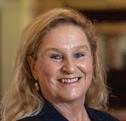 ABY BRENDA RICHARDS IRCP Coordinator
ABY BRENDA RICHARDS IRCP Coordinator
s I sit down to write this article, I’ve been thinking about the years of working on our ranch and with our associations, agency partners, and others assuring the voices and stories are heard regarding the economic, social, and ecological benefits our industry brings to the table. Taking that walk down memory lane brought up so many things — opportunities that have paid off, risks that have been taken, friends made across the state and the nation, lessons learned, a successful business, but most of all the fact that we have a
legacy to share and pass along to the generations of producers.
The membership edition of Line Rider brought excellent information. As I thought about the challenges we constantly face as cattle producers, I couldn’t help but also think about the support and help along the way we receive by participating. Idaho Cattle Association (ICA), Idaho Public Lands Council (IPLC), and the National Public Lands Council (PLC) have always had our backs during good times or challenging times. There have been some intense challenges from time to time, but the resilience, dedication, determination, knowledge, and support allow us to come through those times better, hopefully wiser, and with the same drive to be successful cattle producers.
The Idaho Rangeland Conservation Partnership has been able to bring folks together for meaningful conversations around Idaho’s rangelands. Our annual meetings focus on information sharing, opportunities, partnerships, and lessons learned. The discussions bring diverse rangeland interests to the table — ranchers, conservationists, agency folks, academia, recreationists, and people who love the open spaces Idaho’s rangelands provide – to learn more about where we have common interests, where we can learn from each other, and to work to build partnerships and support in areas where we can capitalize on each other’s skill sets. We continue to share our story and help people understand the benefits ranchers and grazing bring to the

www.idahocattle.org IDAHO CATTLE ASSOCIATION 31 IDAHO RANGELAND CONSERVATION PARTNERSHIP
CONVERSATIONS AROUND IDAHO’S RANGELANDS.
ONE OF IRCP’S CORE GOALS IS TO CREATE SPACE FOR VARIOUS GROUPS, FACILITATING

communities, wildlife, and multiple users that depend on Idaho’s rangelands remaining healthy and productive. We talk about economic factors and community stability and the legacy of commitment to the land passed on through generations. We talk about how new proposals, such as large energy projects or conservation rule restrictions, can affect these rangelands. We discuss how other opportunities, such as funding pools or new science, can have positive effects on these rangelands. Have all the conversations been about green pastures and sunshine? Definitely not, but every conversation has been worthwhile and helped provide direction to work and provide further thought and conversation around issues. Working relationships have been built and we are now seeing funding streams for programs and projects to help work on Idaho’s rangelands. What a unique position. A generation of young and dynamic leadership within ICA, combined with the same
dynamic, motivated, and next generation folks within many of our agencies is an exciting combination! We need to seize that opportunity. The time is right to be reaching out and having conversations with the folks you deal with on your operation, whether that
We are seeing diverse groups of agency folks pulling together to sit down and talk to keep rangelands healthy and sustainable generation after generation.
be the Forest Service, Bureau of Land Management, Idaho Fish & Wildlife, U.S. Fish & Wildlife, Natural Resource Conservation Service, or anyone else who has a stake or a say in the longterm success of your ranch and its legacy. Generations before us often had to fight long and hard to assure our ranches are still sustainable and functioning. Idaho has a great history of partnering
and working together, often referred to as “the Idaho way.” Successes such as the Roadless Rule, Idaho Sage Grouse plans, the Owyhee Initiative, and Good Neighbor Authority just to name a few. Building on the successes of those, we now are in another unique position of opportunity with funding streams and willing partners.
We are seeing diverse groups of agency folks pulling together to sit down and talk amongst themselves, and with producers and landowners, about the knowledge, skill sets, funding capacities and determination we all bring to the table to keep rangelands healthy and sustainable generation after generation. I am seeing a willingness among these “next geners” to listen and learn from each other and find the “what can we do”. Is it going to be easy? Definitely not, but as Cameron noted in his musings in the Rider, risk often turns into a great reward and every time might not result in a full win, but it is always an opportunity to learn. Whether it is soil health
32 LINE RIDER APRIL/MAY 2024 www.idahocattle.org
A GROUP OF STUDENTS POSE TOGETHER FOLLOWING A TOUR.
and conservation, virtual fencing pilot projects, Sage Grouse habitat projects, invasive grass control projects, water protection or water restoration projects, I truly believe we are on that cusp right now. Funding mechanisms are in place with many of the agencies and it’s a perfect time to jump in and have those conversations on working lands for generations. Idaho State Department of Agriculture even has a new program passed this year in the legislative session that is set up to help with rangeland improvements. Think about reaching out to one of the agency people in your area to start that conversation around these opportunities. IRCP can even help in initiating that conversation if you are not sure where to start.
IRCP is committed to continue helping to bring the diverse interests together and promote conversation and opportunity. IRCP’s charge of helping in identifying any barriers or obstacles is to then get those challenges to the right folks — such as ICA or Idaho Public Lands Council — to work on ways to address them.
Opportunity and legacy. What a great combination for the generation of my kids and grandkids as they continue to build on these partnerships and tap into this new generation in land management interests. Idaho’s healthy, working rangelands mean healthy communities for strong economic benefits, healthy social aspects which includes open space and places to recreate, and healthy landscapes, soil and water, all leading to healthy rangelands for grazing, wildlife and for our generation and generations to come. Seize the opportunity and support the legacy.


IRCP’S ANNUAL MEETING SERVES TO PROVIDE EDUCATION AND FUNCTIONAL CONVERSATIONS. THE GROUP ALSO PARTICIPATES IN A VARIETY OF EVENTS AND MEETINGS TO SHARE THIS WORK.
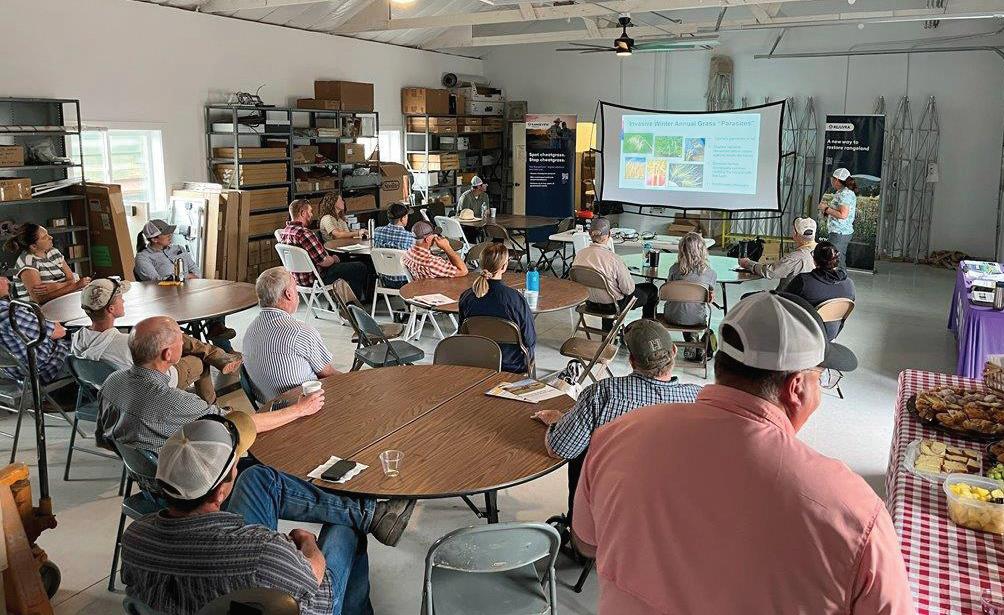
www.idahocattle.org IDAHO CATTLE ASSOCIATION 33
Equipping Future Stewards and Advocates
Engaging CSI students in Idaho’s cattle industry.
BY JAYSA FILLMORE Assistant Professor of Agriculture College of Southern Idaho
If you were fortunate enough to attend the Idaho Cattle Association (ICA) Annual Convention this past fall in Sun Valley, you were likely met with the fresh faces of eager college students who may have been serving as convention interns or navigating the event as a first-time attendees. While it makes sense for those young people who grew up in the cattle world to attend the ICA Convention, long-time members might question
the involvement of students who are very new to the industry. Regardless of background, the ICA Convention has proven to be a valuable space for students to engage with an industry that many aspire to join.
As someone who did not grow up in the cattle industry myself, I am well aware that I am not the expert when it comes to producing and marketing bovine. As much “book knowledge” as I can convey in the classroom, nothing compares to the knowledge and advice that students can gain from connecting with the experts. This is one reason why the
College of Southern Idaho Agriculture Department continues to prioritize attending events like the Idaho Cattle Association Annual Convention. Additionally, I learn just as much or more than the students from events like this. The science of agricultural production advances at a rate that requires constant professional development. I appreciate the experts who speak and share their knowledge at the ICA Convention because I take that knowledge directly back to my classroom to further impact students who were not able to attend in person.

34 LINE RIDER APRIL/MAY 2024 www.idahocattle.org COLLEGE OF SOUTHERN IDAHO
CSI’S AG CLUB BRINGS A LARGE GROUP TP ICA’S ANNUAL CONVENTION IN SUN VALLEY, ID.

Attending Convention this past year proved to be an extra-special experience because five CSI students were selected to serve as Convention Interns. These individuals followed in the footsteps of their peers from previous years and put a great deal of effort into their application materials. Their hard work paid off and I was extremely proud of both the individuals who were selected and those who applied but were not chosen this time. I strongly believe that competition raises the bar for everyone and sometimes the best thing that can happen to a student is to be passed over for an opportunity. The motivation that comes from missing out helps boost their effort for the next occasion that comes around. The interns always return to classes and speak positively about
their experience which helps recruit future applicants. I appreciate that the ICA balances selection of students with deep cattle roots with those who want to learn but don’t have the advantage of a childhood on the ranch.
I strongly believe that competition raises the bar for everyone and sometimes the best thing that can happen to a student is to be passed over for an opportunity.
New to the Convention this year was the Student Quiz Bowl competition and true to my usual routine, I sent students into that new experience with less than all the information they may have desired. They may or may
not have actually known what they signed up for when they volunteered to be part of the team but I have found this practice to be similar to sending livestock through a new handling system. The less they know the better the first time around! In the Ag Department, our general advice for students wary of new adventures is to “just get on the bus!” CSI students have tended to view themselves as less-equipped to compete against students attending a university and it was fun to see their confidence boosted when they were awarded the trophy for winning the competition.
In addition to attending the ICA Annual Convention, I also rely heavily on contributions in the Line Rider magazine and Resource Guide published by the ICA to inform my instruction in the classroom and prompt connections
www.idahocattle.org IDAHO CATTLE ASSOCIATION 35
CSI STUDENT, AND FORMER ICA CONVENTION INTERN, JW POWERS, SEES SUCCESS IN THE SHOW RING. POWERS ALSO HELPS FACILITATE THE IDAHO FFA STATE LIVESTOCK JUDGING COMPETITION, HELD AT CSI’S CAMPUS EACH SPRING.


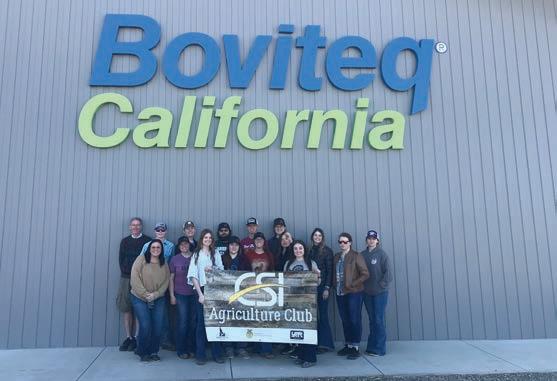
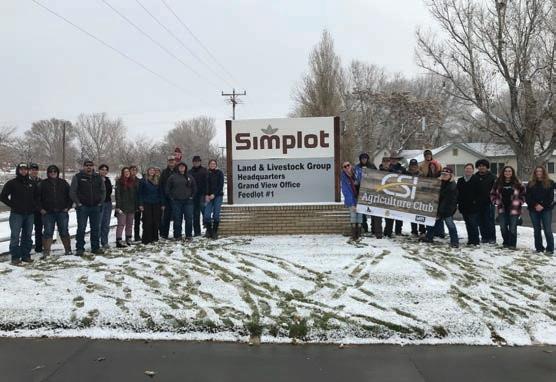
with industry professionals. For example, each semester in my Principles of Animal Science class, I ask students to research a topic related to animal health. I utilize the Resource Guide to invite producers, veterinarians, Extension professionals, and other experts in animal health to attend our Animal Health Showcase event. When students know that industry professionals will be in attendance, it raises the bar for effort and improves the end quality of their presentations. This also offers students the opportunity to learn from those professionals who help correct misinformation or misconceptions as offer their own expertise to round out the students’ knowledge. This Resource Guide also helps me connect with producers for field trips and industry tours and contributes to my database of em-
ployers who may be offering internships and jobs for my students.
I strongly believe in the power of a professional network in the agricultural industry and strive to model that for my students. While it would be easy for me to write off cattle as “not my thing” and pass that responsibility for industry engagement to someone else, I can’t expect my students to step out of their comfort zone unless I am willing to do so myself. I may not know all the answers or have the experience to share but I can guarantee that I will be able to find someone who does.
The Idaho Cattle Association has provided the venue and network to help me help my students and I hope that investment in future steward and advocates for this industry continues for many years to come.

36 LINE RIDER APRIL/MAY 2024 www.idahocattle.org
AG CLUB STUDENTS PARTICIPATE IN A VARIETY OF TRIPS AND TOURS, STRUCTURED TO EXPAND THEIR VIEW AND EXPOSURE TO IDAHO AGRICULTURE.
2023 ICA CONVENTION STUDENT QUIZ BOWL WINNERS.
The Future Looks Bright
A peek inside the happenings of Idaho’s land grant institution’s Student ICA.
BY MONTANA MACCONNELL
University of Idaho Student, 23-24
SICA President and former ICA/IPLC Summer Intern
What better way to ensure the Idaho beef heritage than to nurture the next generation of ranchers, producers, and constituents? This is exactly the goal of the Student Idaho Cattle Association (SICA) at the University of Idaho. Currently there are over fifty active members of SICA and meetings are held biweekly. These meetings provide many benefits to students; including professional development, personal growth, career exploration, industry knowledge, campus engagement, and more.
One of the most rewarding events for SICA members is the annual ICA Convention. Students are able to attend the events and get a glimpse into the complexities of the Idaho beef industry. Students also get the unique opportunity to network with industry professionals in a non-collegiate environment, providing them growth as not only a student, but also as an individual. Twenty-four SICA members were able to attend the ICA Convention last year and plans are already in store for the trip this coming fall!
When the members of SICA are not on a trip, their meetings consist of guest speakers. SICA was fortunate to have a variety of speakers share with the club this school year.
To begin the fall ‘23 semester, Dean Michael Parrella of the College of Agricultural & Life Sciences (CALS) talked about the many exciting happenings in CALS and how to succeed as a student. Representatives from Agribeef and Five Rivers Cattle Feeding shared information about their company structures, integrated cattle feeding, and potential career options. Jake Hennessy from Career Services provided a resume workshop meeting to help members prepare for Networking Night and the Career Fair at the University of Idaho. Meranda Small, Extension Educator and Beef Council educator, was able to provide over twenty members with an in-person Beef Quality Assurance training, and

www.idahocattle.org IDAHO CATTLE ASSOCIATION 37 STUDENT IDAHO CATTLE ASSOCIATION
MEMBERS OF UNIVERSITY OF IDAHO’S STUDENT ICA POSE WITH COLLEGE OF AG & LIFE SCIENCES DEAN MICHAEL PARRELLA.

all the members were able to get BQA certified, an excellent addition to their professional portfolios. To wrap up the fall semester, there was a Beef Trivia Kahoot! night with snacks and prizes. To kick off the spring semester, Jeni Ball and Bailey Storms of AgWest Farm Credit presented to the club about their career paths and how to get involved after college. Jessie Van Buren, Latah County Extension Educator, spoke to the club about opportunities for community service through extension, UI extension careers, and life as a north Idaho beef producer. Some SICA alumni, Jayden Mink and Samantha Short,
talked about their experience working at AgriBeef in Boise. Even the ICA President, Jerry Wroten, attended a SICA meeting to update students on the ICA influence and current happenings in the beef industry across the state.
Perhaps the most important aspect of SICA is that it provides a community. For college students with a beef background or beef career in mind, it is sometimes hard to find others with similar views and experiences. Entering the adult world is a scary and tumultuous part of life, but having a group that provides familiarity seriously contributes to success. Many SICA members
attribute their positive college experience to the connections and community gained through membership.
The Student Idaho Cattle Association has been nominated for the College of Agricultural and Life Sciences Club of the Year Award. This is not only thanks to our active membership, but also to all of the supporters of the club. If it weren’t for the generous donations, funds, and contributions to the annual Beef Raffle fundraiser, SICA would not be what it is today. Thank you to everyone who helps to make college a little better for the next generation.

38 LINE RIDER APRIL/MAY 2024 www.idahocattle.org
A GUEST SPEAKER PRESENTS AT A SICA MEETING.
U OF I SICA MEMBERS PARTICIPATE IN AN EDUCATION SESSION DURING ICA’S CONVENTION.
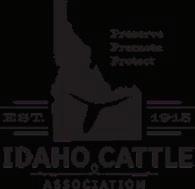
Idaho Cattle Industry Idaho Cattle Industry Resource Guide Resource Guide 2024-2025
The Idaho Cattle Association Resource Guide contains contact information for ICA staff & leadership, State & Federal government agencies, elected officials & industry associations in an easy-to-carry, digest-sized guide to reference year-round!
What does it include?
In addition to contact information for ICA leaders, agencies, elected officials, and industry associates, this guide also lists feedlot owners & operators, purebred producers and allied industry resources.
Who receives the guide?
Thousands of cattle producers throughout the state, as well as agricultural offices & businesses. Participants at events throughout the year may also be able to pick up a Resource Guide.
What's the cost to me?
Currently, the listing is free for all members! Non-members can be listed for a $50 fee in 2024. Read below for changes to cost starting in 2025.
New in 2025:
Feeder, Allied Industries & Purebred will be included in the guide automatically - no need to complete additional paperwork!
2024 is the last year for Local Associate & Industry supporters to receive an invitation to submit a listing. Beginning in 2025, a listing for these member levels will be $125. We will no longer accept non-member listings, beginning in 2025.
Cow-calf producers will continue to receive a form to opt-in to the guide, with the option to select a breed category, as well as 1 alternate category.
Annual Resource Guide Listing
To be listed in the '24-'25 Annual Resource Guide, fill out the form below and return via mail to the ICA Office or email to morgan@idahocattle.org by June 1, 2024.
Business/Ranch Name:
Name:
Title:
Address:
City: State:
Email: Phone: Zip:
ALLIED INDUSTRIES - choose a listing category:
AI/Embryo
Animal ID
Animal Health
Auctions
Banking & Finance
Consulting
Optional
Club Calves
Equipment & Supplies
Feed & Supplements
Fencing
Insurance
Marketing & Media
Meat Processor
Range Management
Real Estate
Trucking
Other
Registered Cattle
Replacement Heifers
of Bull Sale
Website: Date
Business Description (20 words or less):
Offer Private Treaty? Y or N Breed COW-CALF / PUREBRED:
Closing the Gap
Getting to know a new face at the proverbial table, Range Economist Jessica Windh.
 CBY JESSICA WINDH Extension Specialist, Rangeland Economics
CBY JESSICA WINDH Extension Specialist, Rangeland Economics
University of Idaho
ollaboration is always the key. This has shown true through every step of my education and research so far, and it seems especially true when it comes to managing Idaho rangelands. In the five months I have been in the position of Rangeland Economist Extension Specialist with the University of Idaho, I have spent an inordinate amount of time learning the acronyms for the multitude of stakeholders that I will be working with in the coming years: ICA (Idaho Cattlemen’s Association), ISDA (Idaho State Department of Agriculture), IDL (Idaho Department of Lands), IRRC (Idaho Rangeland Resources Commission) , IRCP (Idaho Rangeland Con -
servation Partnership), and luckily there were some I already knew: USFS (U.S. Forest Service), BLM (Bureau of Land Management), and NRCS (Natural Resources Conservation Service). You would think that working with all of these groups would be challenging, but as I have met folks over the past few months, I have also learned that all of these groups share a similar goal – keeping Idaho lands healthy and productive. The mosaic of land ownership is one of the biggest challenges when it comes to managing vast tracts of lands such as those in the western US. Wildlife, weeds, fire, and other natural disturbances do not recognize fence-line boundaries, so in order to effectively manage these things, collaboration between all of the land managers is vital.
Luckily, management across multiple land ownership and uses was a common occurrence in Wyoming as well. The resulting challenges frequently entered the conversation while I

www.idahocattle.org IDAHO CATTLE ASSOCIATION 41 RANGELAND ECONOMICS

was getting my undergraduate degree in Rangeland Ecology at the University of Wyoming. One of the first issues I ever researched were non-lethal losses to the Wyoming livestock industry caused by the presence of predators. We were able to document weight losses, reductions in birth rates, and changes to behaviors in response to predator presence, and also documented issues related to protected migratory birds during calving and lambing season. Predator and depredation management is a clear example of a mission that requires input from multiple stakeholders, such as U.S. Fish and Wildlife Service, the Department of Fish and Game, public land agencies, and livestock owners. Clearly one research project did not solve an issue as contentious as predation and livestock depredation, but it completed one more puzzle piece to keep the discussion moving forward.
I saw a different side of collaboration while completing my Master’s degree in Agricultural Economics at the University of Wyoming. In this case, I was involved in the “Collaborative Adaptive Rangeland Management” project, CARM for short. This project was as close to a living experiment as I think you can get. A group of ranchers, conservationists from non-governmental agencies, and public agency employees all worked together to manage a herd of cattle to try to meet goals that were important to each of the stakeholders involved; the management objectives fell into three categories: wildlife (mostly bird specific), vegetation, and production (economics). While the group started off a bit contentious, they quickly learned how to work together and symbiotically meet the goals of the group. My role in the project was to compare the costs and revenues of the CARM management to what a “traditional” season-long grazing management system would produce. As you might expect, the results showed there were economic trade-offs between the managing for conservation goals rather than maximizing production, but the differences were small.
Nebraska – Lincoln where I got my Ph.D. in Agricultural Economics. There I expanded my scope from strict rangeland issues and began exploring alternative grazing forages. My research group was comprised of animal science, plant science, and agricultural economics graduate students, and we were tasked to work together to develop our research. It should come as no surprise that the faculty advisors for the three disciplines were all extension faculty as well and were ingraining in us the value of working in teams to address large, producer-relevant issues. My research focused on how grazing cover crops in the spring and early summer could allow rangelands extra time to rest and ultimately improve the health of the range. My results showed that relatively small delays in turning livestock out to rangelands for summer grazing could result in multi-fold increases in forage production by allowing extra time for growth.
The most important group that I hope to collaborate with are producers; those with their boots on the ground.
None of these issues that I have previously studied are unique to the states I was in at the time, and I am eager to repeat these studies in Idaho. The number of groups that I have already connected with in the state give me great hope that we will be able to tackle any challenge we are faced with. I have already partnered with USFS, ISDA, and the ARS Sheep Experiment station in Dubois on three separate projects that will contribute to Idaho rangelands and support the needs of public lands grazers within the state.
The collaborative theme continued at the University of
The most important group that I hope to collaborate with are producers; those with their boots on the ground and whose livelihoods are the most likely to be impacted by the research coming out from the University of Idaho and our partners. Collaboration means that everyone has a voice at the table, and as you should know by now, I am a big supporter of collaboration. I am excited to be at the University of Idaho, and I hope to become a trusted resource for the cattlemen and women of Idaho. Don’t hesitate to reach out to me via email (jwindh@uidaho.edu) or phone (208) 736-3621.
42 LINE RIDER APRIL/MAY 2024 www.idahocattle.org

Entries must be received by June 15th and will be voted on at Summer Round Up! Must be mailed to the ICA Office : PO Box 15397, Boise, ID 83709
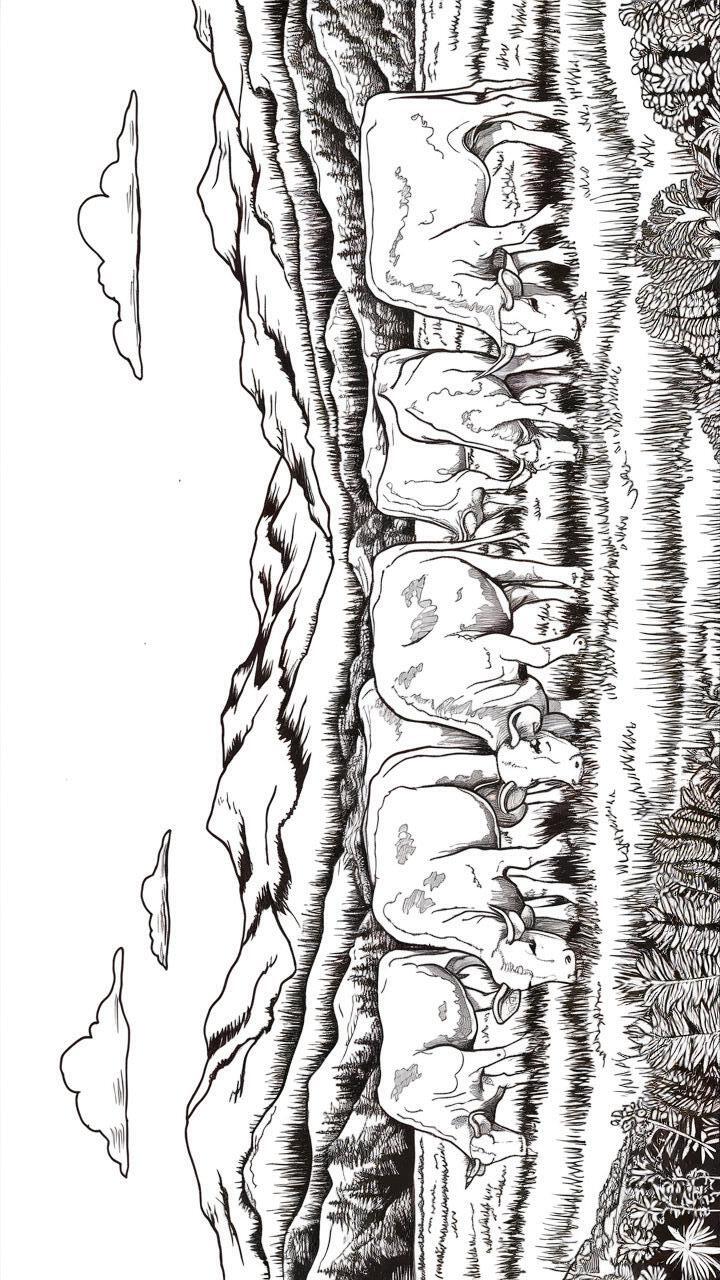
Name : Age :
SPRING COLORING CONTEST

Summer Round-Up
June 24-25, 2024
Lewiston,
Idaho
Join us for Summer Round-Up in Lewiston, Idaho, this year June 24-25! This mid-year event is the top place for those in Idaho's cattle industry to engage in conversation, hear pertinent industry issues & learn from experts on topics directly related to your operation.
During Summer Round-Up, you can expect to hear from NCBA, the Idaho Beef Council and other agency representatives, as well as ICA leadership. Take a trip to the University of Idaho in Moscow to experience the great work being carried out in the College of Agricultural and Life Sciences. We’ll tour various programs and projects that are serving to both educate the future of our industry and provide research into important beef and cattle industry topics. Those who desire can join us on the links for the annual golf tournament, with competition, socializing and prizes to cap off the event!


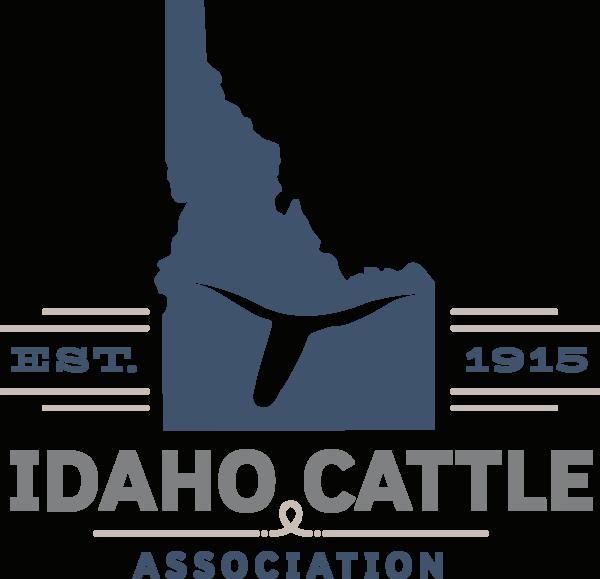
REGISTRATION Registration must be received in the ICA office by FRIDAY, JUNE 10 Onsite registration is available at an increased rate, meal availability is NOT guaranteed Reserve your room at HELL’S CANYON GRAND HOTEL (208) 799-1000 Reference the Idaho Cattle room block by June 10th to receive discounted room rate. REGISTER ONLINE TODAY www.idahocattle.org/events NAME:________________________________ COMPANY:______ ADDRESS:______________________________ CITY: ___________ STATE:______ ZIP:______ EMAIL:_______________ PHONE:__________ COMPLETE PACKAGE $200 GOLF RANGE TOUR Both options include all meetings, meals & choice of event Monday Tuesday Meetings Only Golf Tour A La Carte Meals Grand Total Includes meetings & Cattle Barons Bash Includes meeting, lunch Both days, meals not included Cart + green fees for 18 holes Rangeland Tour RETURN PAYMENT & FORM TO: IDAHO CATTLE ASSOCIATION PO BOX 15397, BOISE, ID 83709 OR email a copy to: michelle@idahocattle.org Please make checks payable to the Idaho Cattle Association GOLF TEAM NAMES: Cattle Barons Bash Boxed Lunch $95 $100 $80 $50 $50 $60 $25 PAYMENT INFO CARD NUMBER:_______________________________ CIRCLE ONE : VISA MASTERCARD AMEX DISCOVER NAME: _____________________________________ EXPIRATION DATE: _____________ CVV:_________ Summer Round-Up June 24-25, 2024 Lewiston, Idaho
New and renewed ICA members
Adrian Meyer
AG Equipment Inc. DBANW Mixer Feeder
Alan Johnstone
Alan Prouty
Allflex
American Hereford Association
Andrews Farms
Antelope Springs Ranch LLC
Anthony H. Osterkamp
Aron Bennett
Audra & Casey Cochran
Banner Bank
Ben Gavica
Ben Willis
Benjamin Hone
Berwyn & Millie Mussmann
Bill & Katie Slavin
Bonneville County Cattlemen’s Assn.
Bradley Shelden
Brenda Udy
Brett Bartholomew
Brian Harris
Bronc May
Caribou Cattlemen’s Association
Carrie Rahier
Carson Ranches LLC
CD Ranches
Chad DeWitt
Chris Johnstone
Clair Kempton
Clay Nannini
Clayton & Jakobi Munsee
Commercial Tire Store





Cris Davis
Dan & Brenda Udy
Dan & Charlotte Mulkey
Dan Hinman
Darcy Helmick
Dave Hart
David Modde
David Van Buren
Deseret Ranches/ AgReserves Inc.
Diamond A Livestock Inc.
Dick Fredrickson, DVM
Don Knapp
Doug & Chris James
Drew Corrigan
Elias, Inez & Martin Jaca
Elkington Polled Herefords
Fife Enterprises
Flying A Ranch Inc.
Gary Depew
Gill Family Ranches, LLC
Grant’s Galloways
Guerrant & Company
CPAs, PC
Guy Kaster
Hanssen Cattle LLC
Hepton Livestock, LLC
Hobson Farms
Horseshoe Cattle
Keith & Carol Feldman
Kennedy Farden
Kenneth Mortensen
Kenzie Stevens
Kesl Ranch
Kevin Hoffman
Kurt Wolsborn
Lake Channel Ranch, Inc.
Lane Keith Meyers
Lemhi Regional Land Trust
Loren Schwarzhoff
Mark & Amy Munsee
Mark Nelson
Marlin & Jeanne Wolfe
Martin & Amber Arritola
Marty Owen
Matt Stinebaugh
McCann Ranch & Livestock Co.
Mike & Cally Roach
Mike & Lisa Henslee
Mike Irish
Mink Land & Livestock
N & M Farms
Noah’s Angus Ranch, LLC
Orie & Kortne Cockrell
Patterson Land & Livestock
Romans Ranches Charolais
Ron & Kerry Wilcox
Rymo Cattle Co.
Sage Brock
Scott & Debbie
Bunderson
Scott McNeley
Scott Simplot
Shane & Mimi Rosenkrance
Shane Jacobson
Sharon Hoffman
Shawna Gill
Sierra Crisp
South Fork Animal Clinic
Spring Creek Ranch
Squaw Butte Daylily Ranch
Stephen & Helen Percy
Stepping Stone Ranch
Steven & Louise Wood
Stickman Livestock
Stonebraker McQuary
Insurance
The Smiths
Todd & Ryan Lickley
Tom Basabe
Tom Munns
Tony & Brenda Richards


Jake & Lori Ireland
JBB/AL Herefords
JBB/AL Herefords LLC
Jeff Daniels
Jestin & Barb Croft
Jim Church
Jim Dartt
Jim or Tina Hawkins
Jim Ryska
Jimmie Bennett
Joe Sharp
John Lanting, DVM
Katie Williams
Keetch Dairy
Payette River Cattlemen Association
Phil & Kim Zemaitis
Picabo Livestock Company
Pristine Springs Angus
Quarter Circle Bar
Rafter J
Ramona Ridley
Randall Raymond, DVM
Red Rock Ranch E7
Robert & Linda Rider
Robert Shirts Farms
Rollheiser Feedyard
Rolly Lisle
Treasure Valley Livestock Auction
Tri-County Supply
Valley View of Magic Valley
Van Buren Ranch, LLC
VerNon & Joanne Roche
Walking C Ranch
Wallis Ranch
Weiser Veterinary Clinic
WH Land & Livestock
Whittaker Commercial
Cattle LLC
Wood V-X Red Angus
Wooden Shoe Farms
46 LINE RIDER APRIL/MAY 2024 www.idahocattle.org
MEMBERSHIP

PO
151, Huston, ID 83620 (208) 965-3130 cell eholt@hereford.org


KODY DEE WILLIAMS
Northwest Regional Manager
Cell: 509.948.6430
Office: 800.989.8247
Email: kodydeewilliams@allflexusa.com
P.O. Box 612266 • 2805 East 14th Street Dallas/Ft. Worth Airport, Texas 75261-2266



Dennis Boehlke
9351 Lake Shore Drive Dennis: Nampa ID 83686 (208) 989-1612 2 miles west of Hwy. 45

2 Year Olds & Spring Yearling Bulls Spring Yearling Hereford & Red Baldy Heifers
KNIPE LAND COMPANY
• Farm, Ranch, Recreation, Large Land Parcels, and High Net-Worth Real Estate • 1031 Tax Deferred Exchanges











www.allflex.global/us/
PRIVATE
HEREFORD
ANGUS
James & Dawn Anderson 208-280-1505 208-280-1509 Beverly Bryan JBB/AL HEREFORDS 1973 S 1500 E GOODING, ID
Bryan
Anderson
TREATY SALES
& RED
83330 jbbalherefords@gmail.com
& Charly
208-280-1964 Jae Anderson Check out our offering at jbbalherefords.com
info@knipeland.com • 208-345-3163 • www.knipeland.com Our experienced sales team is ready to solve your real estate needs. Ready to buy or sell? Call today! www.loosliredangus.com BrianLoosli 3127E.1100N. Ashton,ID83420 208-652-3303 208-317-7878 blloosli@gmail.com JonathanMeek 208-227-3779 MarkLoosli 208-351-3333 ThankYou toallofourloyalcustomersfor agreatsale!Seeyounextyear! AMERICAN HEREFORD Association EMILEE HOLT
REp.
BUILT ON TRADITION. ENGINEERED TO SUSTAIN. BREEDER & SERVICE GUIDE
Territory 1 Field
BOX

It pays to be an AgWest customer-member. In 2023, our Patronage Program paid 1.25% of daily balances on eligible loans as a cash dividend. This totaled $387 million returned to customer-members across the West. If you’re not receiving a portion of your lender’s profits back, it’s time to make the switch to AgWest Farm Credit. Learn more at AgWestFC.com. This institution is an equal opportunity provider and employer.














 BY JERRY WROTEN ICA President
BY JERRY WROTEN ICA President


 BY CAMERON MULRONY ICA Executive Vice President
BY CAMERON MULRONY ICA Executive Vice President





 BY KAREN WILLIAMS ICA Natural Resources Policy Director
BY KAREN WILLIAMS ICA Natural Resources Policy Director











 BY RUSS FULCHER U.S. Congressman
BY RUSS FULCHER U.S. Congressman


 Photo by Noppadol Paothong
Photo by Noppadol Paothong

 Photo by Ken Miracle
Photo by Ken Miracle
Photo by Ken Miracle
Photo by Ken Miracle










 This endowment has touched the lives of students with a varied geographic background, including Idaho natives. The research team is extremely productive and grateful for the help to continue the mission of serving the beef industry
Phil Bass, Ph D Associate Professor, Meat Scientist
This endowment has touched the lives of students with a varied geographic background, including Idaho natives. The research team is extremely productive and grateful for the help to continue the mission of serving the beef industry
Phil Bass, Ph D Associate Professor, Meat Scientist












 BY PATXI LARROCEA-PHILLIPS
BY PATXI LARROCEA-PHILLIPS










 OBY GRETCHEN HYDE Executive Director, IRRC
OBY GRETCHEN HYDE Executive Director, IRRC



 ABY BRENDA RICHARDS IRCP Coordinator
ABY BRENDA RICHARDS IRCP Coordinator
















 CBY JESSICA WINDH Extension Specialist, Rangeland Economics
CBY JESSICA WINDH Extension Specialist, Rangeland Economics
































